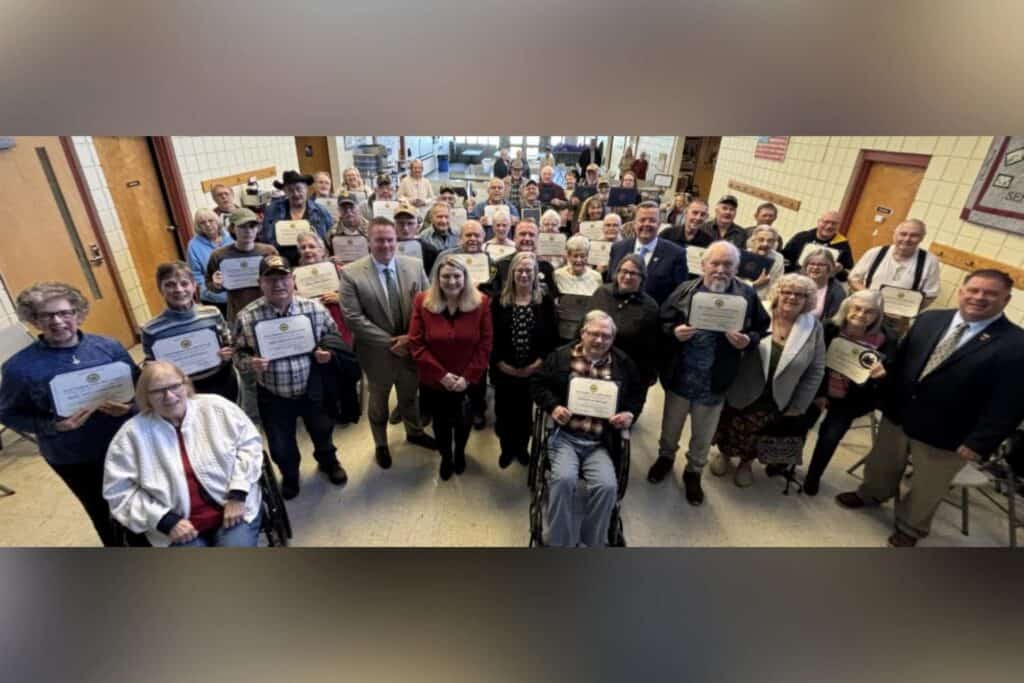West Virginia University professor Nina Assimakopoulos handcrafts flutes in the Native American tradition from old floorboards, tree roots and driftwood, transforming them into instruments for improvisational performance.
Assimakopoulos received the Best Solo Native American Flute CD of 2024 award at the World Flute Society Music Awards for her album “Sonic Bloom: Breath, Branch, Song.”
“Sonic Bloom” features flutes made from repurposed materials like flooring and barn walls. “When I make a flute, I cut open a piece of wood, consider and study its grain and wonder what its voice will be. Because the wood has a voice. It remembers the wind in its leaves, the sound of rain and feel of frost. It has stories to tell,” Assimakopoulos said.
“I create the first hole and blow through it and hear air with no sound. I file and sand the opening, then I blow and hear a peep. I file a bit more, and suddenly a voice sings out of the wood. I’m wooing that voice into being,” she added.
Three years ago, Assimakopoulos made her first flute as a gift to her river-running mentor Jim Snyder, a Preston County maker of wooden paddles who operates RivrStyx. Snyder gave her a cherished piece of wood so she could return it to him in another form.
She sought out James Akins, a Columbus, Ohio, flute maker of Cherokee and Powhatan descent, to learn the craft. The tracks on “Sonic Bloom” were fully improvised on the spot, with no editing other than sound engineering. Assimakopoulos has never recreated any of the pieces for live performance.
“I never know what’s going to come out of these instruments when I put one to my lips. In the recording studio, it was just like, ‘Here goes — what does this wood have to say?’ And then closing my eyes, taking a breath, hearing the sounds collide and bend, especially on the double drone flutes,” she said.
Double drone flutes have two chambers that can be played together or separately. Transitioning from Western flutes to Native American-style flutes, like double drones, was revelatory for the classically trained musician.
With 32 improvisations recorded in two sessions, Assimakopoulos selected 12 tracks for “Sonic Bloom” and titled them. The remaining works went on her CD “Fallen Angels: Voices from the Forest” recorded with Akins and percussionist Mike Vercelli, WVU professor of world music.
For each track on “Sonic Bloom,” she identified the wood source of the flute. The last four songs — “The Rising One,” “Weather Magic,” “Shapeshifter” and “Return of the Sun” — are played on a flute crafted from a fir floorboard given by Snyder.
“Jim gave me a piece of fir that came from the steps in his home. It had 22 grains per inch. The pioneers cut this wood from virgin West Virginia forest at the headwaters of the Cheat River. They built a house out of it. Then they unbuilt the house and moved a little way down the river and built it again. Then, following the timbering industry, they unbuilt it, moved it, rebuilt it again,” Assimakopoulos said.
“Eventually this house landed in Ruthbelle, where Jim lives. Kids, grandparents, coal miners, timberers had been up and down its steps for 150 years. I turned the wood from one of those steps into a flute, and after I recorded on it for the album, I gave it away as a gift to my other mentor, Jim Akins.”
During live performances, Assimakopoulos engages audiences with themes related to nature and ecosystems in what she calls “a genre-bending new form of music best described as eco-performance music.”
“When I play these flutes in concert, I connect the environment the flutes come from to the audience through stories about the wood that I weave into the music,” she said.














